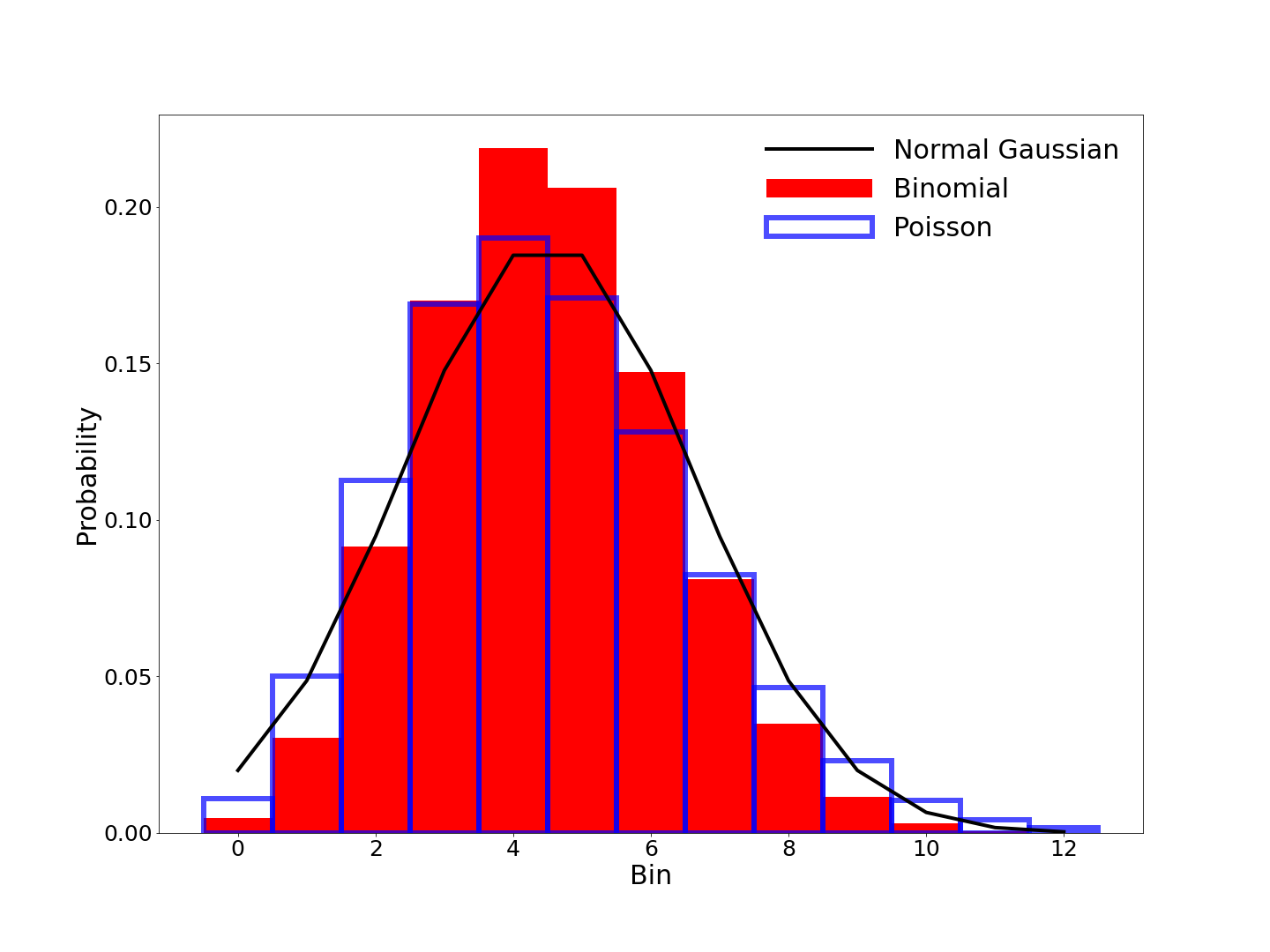Vaccine efficacy
As far as I understand the numbers for the phase III trials for Covid-19 vaccines can be interpreted as follows.
If there are \(N_1\) voluntaries receiving a vaccine and \(N_2\) voluntaries receiving a placebo, and, at a certain point in time, \(V_1\) and \(V_2\) voluntaries infected with Sars-Cov-2, one can infer attack rates as \(p_i=\frac{V_i}{N_i}\). In the end the vaccine efficacy is
\[V_e=1-\frac{p_1}{p_2}\]For the Moderna vaccine the numbers seem to be \(N_1=N_2=15000\) \(V_1=5\) and \(V_2=90\), which gives \(V_e=.94\).
What bothers me are the very low numbers of infected, which makes me think that the efficacy can be significantly different. Indeed, the real infection rates \(p_i\) could be very different from the estimate above. Small \(V_i\) can imply quite big uncertainties.
Let us consider the probability \(P(p_i|N_i,V_i)\), of having a certain infection rate, given that there are \(V_i\) infected in a population of \(N_i\) individuals. It could be estimated under the assumption of independent infections. I would like to find a lower bound \(V_l\) such that the probability that \(V_e\) is even lower than \(V_l\), is small (1%).
We need to solve the equation:
\[\int_0^1 dp_1 dp_2 P(p_1 | N_1,V_1)P(p_2 | N_2,V_2) \theta(1-\frac{p_1}{p_2}-V_l)=.001.\]Using a very simple model with flat prior one can derive a formula very similar to the binomial distribution: \(P(p_i | N_i,V_i)=K_i(N_i,V_i) p_i^{V_i}(1-p_i)^{N_i-V_i}\) where \(K_i\) is the appropriate normalization constraint. The integral above formalizes the sum of all the probabilities of possible infection rates, with and without vaccine, that are compatible with the numbers obtained in the trial and which give an efficacy lower than a certain threshold. As it turns out the Moderna vaccine has an efficacy of more than 85% with 99% probability and and an efficacy higher than 80.5% with 99.9% probability. The numbers have been estimated with Wolfram Alpha. Also, for low infection rates, \(V_i\ll N_i\), the computation does not depend on \(N_i\).

The Pfizer vaccine has \(V_1=8\) and \(V_2=162\) which gives \(V_e=.95\) while the lower limits are 89% and 86.5% for 99% and 99.9% probability. The AstraZeneca one has \(V_1=30\) and \(V_2=101\) for a \(V_e=.7\), and even lower bounds. With 99% probability the efficacy must better than 54% but for a 99.9% probability one has to lower the limit to 47%. I have assumed that the test subjects are equally divided in the vaccinated and control groups.
If I understand correctly this vaccine efficacy can be related to the famous herd immunity concept. Indeed, if one individual infects \(R\) others, with vaccine this number would be \((1-V_e)*R\). The virus will only propagate if \(V_e<1-\frac{1}{R}\). Therefore \(V_e\) has to be better than the proportion of infected population needed for “herd immunity” in the absence of a vaccine. With \(R\) between 3 and 5, \(V_e\) needs to be bigger than 80%. Both Moderna and Pfizer vaccines are enough (with high probability) while the Oxford vaccine has between 5% and 75% probability to require additional measures to curb the pandemic.